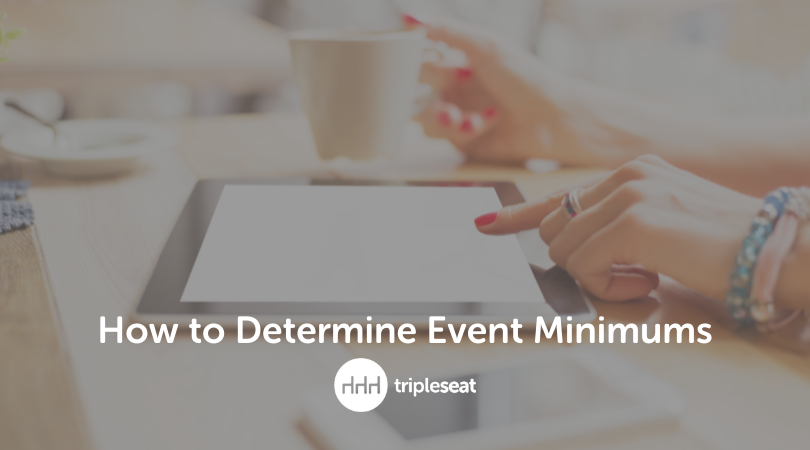How to Determine Event Minimums

Event minimums are nothing new, but determining the amounts can be challenging. You want to be sure you’re offering minimum pricing that’s beneficial for your company’s bottom line and that makes sense for your customers. Don’t worry — we’re breaking it all down for you.
From calculating your minimums to what you should take into account, we’ve got answers to all the most frequently asked questions about event minimums below.
Calculate the amount
Calculating your venue’s event minimums for the first time? There are a few things to keep in mind. The point of these minimums is to ensure that an event brings your business enough profit to be worth all of the costs that come with hosting it on your end. This includes factors such as the client and event types you want to attract, along with costs for things like:
- Staffing
- Post-event cleanup
- Electricity and other utilities
- The season (down to specific dates)
- Day or days of the week
- The particular room or area being rented
- Any other factors you find applicable
If you market yourself as a luxury wedding venue, for example, then your event minimums should reflect that. This will allow you to have the financial means to keep your venue in the best shape possible. It’ll also help you attract the kind of clientele that can afford your price point.
A good rule of thumb: look at your average spend per head on a check. If the standard event time is two hours, think about how many times you could flip that table with regular diners (probably just one to two times). Then, if 10 is the minimum number that qualifies a reservation as private dining, figure out the average spend per head, plus a little more depending on the season or day of the week.
Account for seasonality and trends
Event minimums are rarely a one-size-fits-all amount. If you want to make the most of your events program, it’s wise to take seasonality and business trends into account during your calculations. Your Tripleseat reports will show you info on booking trends. This can help you determine when prices can (and should) fluctuate without risking your profit margins.
Restaurants generally have lower minimum spends than traditional event venues because they offer a smaller space. However, they can also afford to increase event minimums during peak seasons and times when business will be the most predictable. For event venues, peak wedding season is the time when you can charge a higher price. For luxury venues during the busy season, you can go as far as to include minimum spend info in your auto-response email. This saves you time by quickly disqualifying those who don’t have the budget.
Make sure the details are clear
When it comes to money, you want things to be crystal clear. One great way to do this is by including minimum spend info in your events packet. Just be sure you’re creating set minimum spend pricing that accounts for the cost factors we mentioned earlier.
If you don’t want to get too specific, you can simply say something like, “Our private event spaces have food and beverage minimums that depend on the event type and day of the week, starting at $1,200.”
This part of the events packet should be reflective of the pricing — and it should drive home why your business is worth whatever minimums you set. High-end venues with plain, unbranded packets don’t convey a consistent message. Often, all it takes is some simple formatting and consistent branding.
Know when to revisit your minimums
Your minimums don’t have to be set in stone. A few times a year, it’s worthwhile to revisit your calculations to make sure you’re on the right track. One easy way to do this is to see if there’s a remaining minimum when you’re closing out your bookings. If a significant percentage of clients aren’t meeting their minimum and end up just getting charged that amount, your minimum may be a bit too high for your customers.
On the flip side, if you’re running into a busy program with razor-thin margins, it may be time to up the ante. This happens particularly with independent venues that can’t shake the “new kid on the block” feeling, even after they’ve been an established business for years. Don’t be afraid to ask for what you want — and deserve!
Figuring out your event minimums can sound tricky, but it doesn’t have to be. The above steps will help you arrive at an amount that works for both your business and customers and helps keep your private events program thriving for seasons to come.
Use the best software to manage your private events
Once you launch your new pricing and start driving leads, use Tripleseat to help your venue manage them. If you’re not a Tripleseat customer and you’re interested in learning more about Tripleseat’s event management tools and CRM features, schedule a demo at your convenience to take a closer look.


